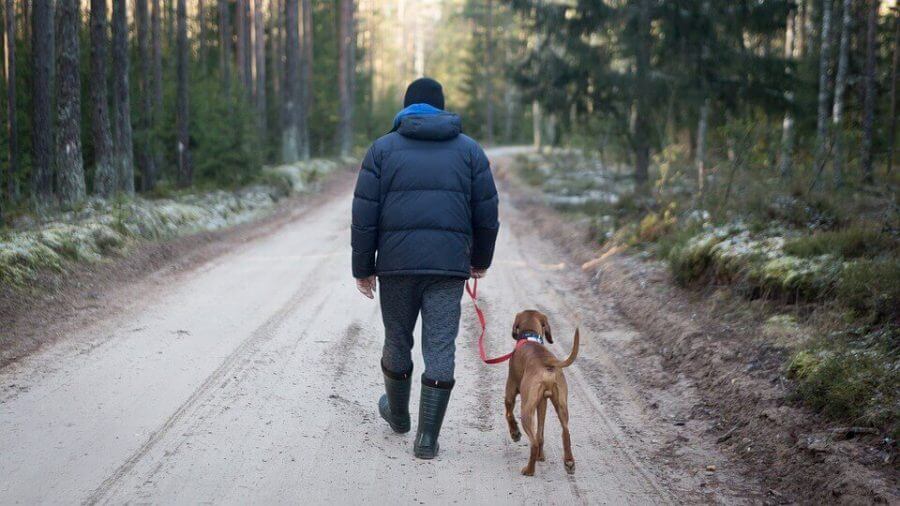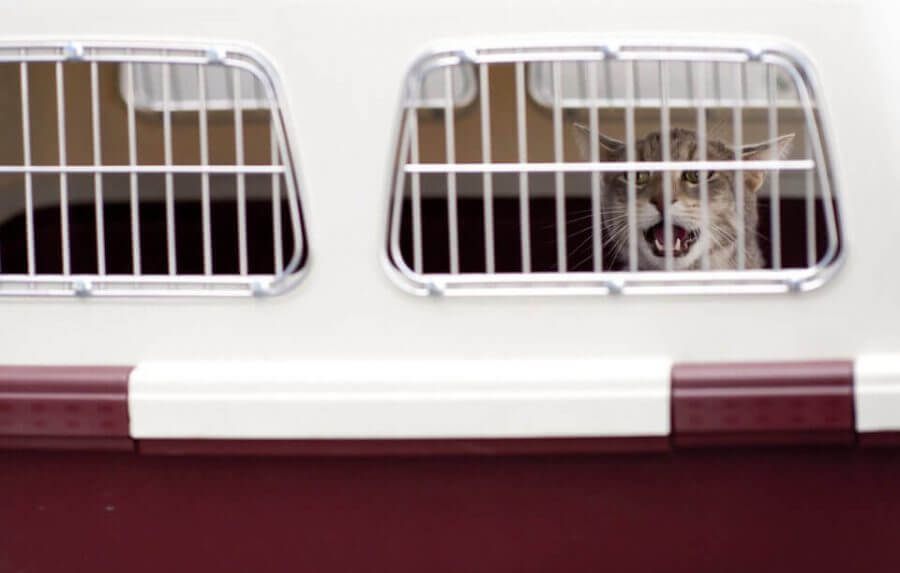

A Brief Guide to Moving with Pets
Posted in Moving Essentials on July 20, 2020
Are you planning on moving with pets anytime soon? If so, you should make sure you do all the necessary research beforehand, so you can carry out the whole process the right way. Jumping into an interstate relocation without a clear plan could potentially end badly for your furry friend.
To help you get all the right info on how to relocate with your beloved animal companion, we’ve put together this quick guide. Read on to learn all about what you should do before, during, and after the move, as well as some common mistakes you should avoid.

Things to Do Before Moving with Pets
In the weeks leading up to the relocation, you’ll surely have your hands full. From organizing the move and decluttering your home to getting all the necessary supplies, such as packing paper, packing everything from the household inventory list, changing your official address – there will be so much to do. On top of that, you have to make sure your pets are ready for the big change. If you’d like to free up your schedule a bit and have more time to dedicate to your dog, cat, or any other animal, we highly suggest getting professional moving services.
Your pre-relocation 101 should include:
- Getting your pets checked by a vet. Visit your local vet, let them know you’re moving, and request a full checkup. If they deem it necessary, they may prescribe your dog or cat something to keep them calm on the road.
- Gather all the documents, a moving permit, and health records. While you’re at the vet’s clinic, request a copy of your pet’s file. Other important documents you might need include various permits and a pet passport if you’re moving internationally. Put all of these in a moving binder to make sure you don’t lose them.
- Check state rules. Different states have different rules when it comes to importing dogs, cats, and other animals. For example, some dog breeds are banned in some states. Of course, if you have an exotic animal, this process should be even more comprehensive.
- Get them used to a carrier. If your pets aren’t used to being in a carrier for extended periods of time, now would be a good time to change that. Depending on the mode of transport you choose, they might need to spend a few hours in one.
- Pet-proof your new home. Is there anything you can do to make your future home a safe environment for an animal? For example, put all cables out of their reach and place baby-proof locks on your cabinets.
- Prepare an overnight bag. As the moving day approaches, you should prepare an overnight bag with moving essentials for yourself and your animal. This bag should contain anything they will need during the trip and on the first day, in case your household belongings are late. This includes food, water, their favorite blanket or toy, any medicine they’re taking, and so on.
Surviving the Relocation Day
The toughest part of any moving process is the relocation day itself. There are many long-distance moving tips to use, but how you handle this day highly depends on your pet’s character. In general, cats tend to be more sensitive to their surroundings, and a large number of movers coming in and out of the house could upset them. Dedicate a room where you will keep your pet while the movers do their thing, especially if you booked packing services since that will take longer. In there, you should put their food and water, litter box, and some toys. Don’t forget to check up on them every once in a while, but don’t let them out.
Alternatively, you could find a sitter for a couple of hours. Ideally, this should be someone your dog or cat already knows and likes. Spending the day at the park is surely a better alternative than being in the way of movers or interrupting your move-out cleaning. It would not only be stressful for the animal, but they could potentially get injured or injure someone else.

How to Transport Your Animal to the New Home
The mode of transport you choose for your furry friend depends highly on the mode of transport you choose for yourself. The best course of action would be to drive to your new home and take your pets with you. This way, you can make any necessary stops along the way to let them out for a walk and reduce their anxiety about moving. If this is a long drive and you’re planning on finding overnight accommodation along the way, get a room that allows animals.
However, driving long distances is not always the best choice, and flying is a better way to move efficiently. You might be planning to get car shipping services and hopping on a plane to your new state instead. In this case, your primary objective should be to find a pet-friendly airline carrier. Ideally, you should find a carrier that will allow you to take your pets with you, instead of putting them in the luggage compartment.

What to Do After You’ve Moved In
You finally reached your new address, all your belongings arrived on time, and you’re pretty much done with unpacking. You can kick back and relax now, right? Wrong. This is the time when your pet will be confused and scared. They don’t know why you’re making them stay in this unfamiliar place where nothing smells or feels like home. They don’t know where they are or how to find their way back. So there are certain things to do after moving to make the transition easier for them.
Maintain Your Pet’s Routine and Morning Walks After Moving In
To maintain any sense of normalcy in your pet’s life, do your best to keep the same routine you had before the relocation. For example, if you always used to take them out for a 30-minute walk in the morning, keep doing so. Keep the same feeding times as well, and try to play with them and give them as much attention as possible.
Different Methods of Introducing Your Animal to Your New Home
Your first instinct might be to let your pet explore its new surroundings freely. However, this could prove to be quite overwhelming, especially for cats. Instead, dedicate one room as the starting point, and put all their favorite things in there. Introduce them to the rest of the house or apartment room by room. You should do the same with the outside world. At first, keep your walks contained to a small area in the vicinity of your house or apartment. Then, as they get more comfortable, start walking farther and farther.
Select a Good Vet Near Your New Home
One of the most important things to do after you move is to find a good veterinarian. Do your research, ask around, read reviews, and check out their services and prices. Having someone trustworthy by your side when your animal needs medical attention will make your life so much easier.

A Mistake to Avoid
One of the most common relocation mistakes people make when moving with pets is misunderstanding their behavior. There is a big change going on in your cat’s or dog’s life – and they don’t even know why. It is completely understandable that they will be moody, sad, or misbehave. Take caution not to punish them for mishaps that might happen during the relocation period. They’re not doing it to get on your nerves; they are simply processing unfamiliar emotions – just like you.

Dogs, Cats, Birds – They Require Different Treatment
We tried to keep this guide as comprehensive as possible, but keep in mind that different kinds of animals – and even different breeds of dogs and cats – require different treatment. This could affect your relocation process to a great extent, regardless of how well you plan the move to another city. For example, if you own a hedgehog, you might not be able to move to Arizona or Nebraska. Ferrets are banned in California and Hawaii, while venomous snakes are forbidden in 19 states, even if you’ve had the venom removed.




